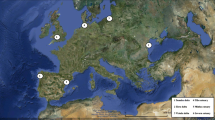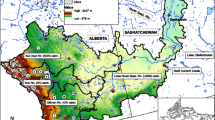Abstract
Background, Aims and Scope
Sediment management in rivers basins has tended to deal with local issues associated with either excessive amounts of sediment (clean and contaminated) or sediment deficit. With sediment management increasingly needing to address both sediment quantity and sediment quality issues, it is becoming increasingly apparent that for sediment management to be effective the river basin represents the most appropriate scale for consideration. Although local and site-specific sediment issues are still likely to be the main scales at which interventions are made they need to be placed within a broader context and with full appreciation and consideration of their impacts within the river basin. This paper describes some of the reasons why the river basin scale represents the most appropriate scale for sediment management, while recognizing the needs for site-specific interventions. It also describes the development of conceptual river basin models (CRBM) for sediment.
Main Features
A CRBM should identify, in a conceptual framework, the relevant key environments (subsystems) within a river basin and the interrelationships between the environments. From a sediment perspective, key information includes the identification of sources of sediment (and associated contaminants and nutrients), the pathways of sediment and contaminants within and between the various environments, and the role of storage elements. Additional information that informs the CRBM includes, the assessment of sediment fluxes (including storage), the residence time of sediment storage, and information on exchanges between sediment and contaminants, although such information is often not available at the scale of the river basin. An example of a CRBM for sediment for a hypothetical river basin and examples of several sediment budgets (for basins in USA and Zambia, and for Europe) are presented which are based on data and information on sediment sources, sediment fluxes and storage. These are discussed and some of the advantages and disadvantages for decision-making for sediment management are described.
Conclusion and Recommendation
Conceptual frameworks and models for sediment offer considerable potential for certain stages of the management process. They are, however, only part of a much larger decision-making process, which involves, amongst other things, stakeholder participation, evaluation of the appropriate legislation and guidelines, and the use of risk assessment and societal cost-benefit analysis.
Similar content being viewed by others
Author information
Authors and Affiliations
Corresponding author
Rights and permissions
About this article
Cite this article
Owens, P. Conceptual Models and Budgets for Sediment Management at the River Basin Scale (12 pp). J Soils Sediments 5, 201–212 (2005). https://doi.org/10.1065/jss2005.05.133
Received:
Accepted:
Published:
Issue Date:
DOI: https://doi.org/10.1065/jss2005.05.133




